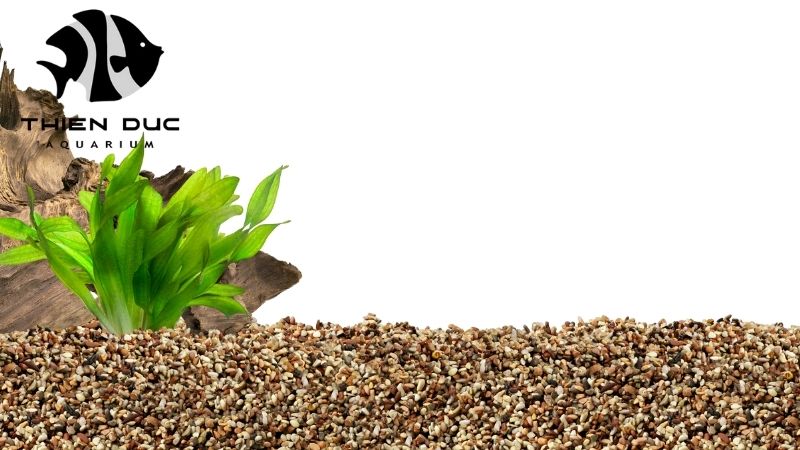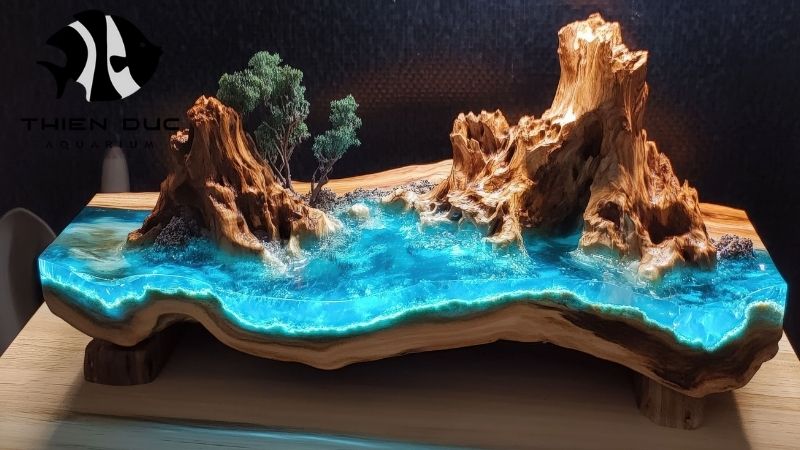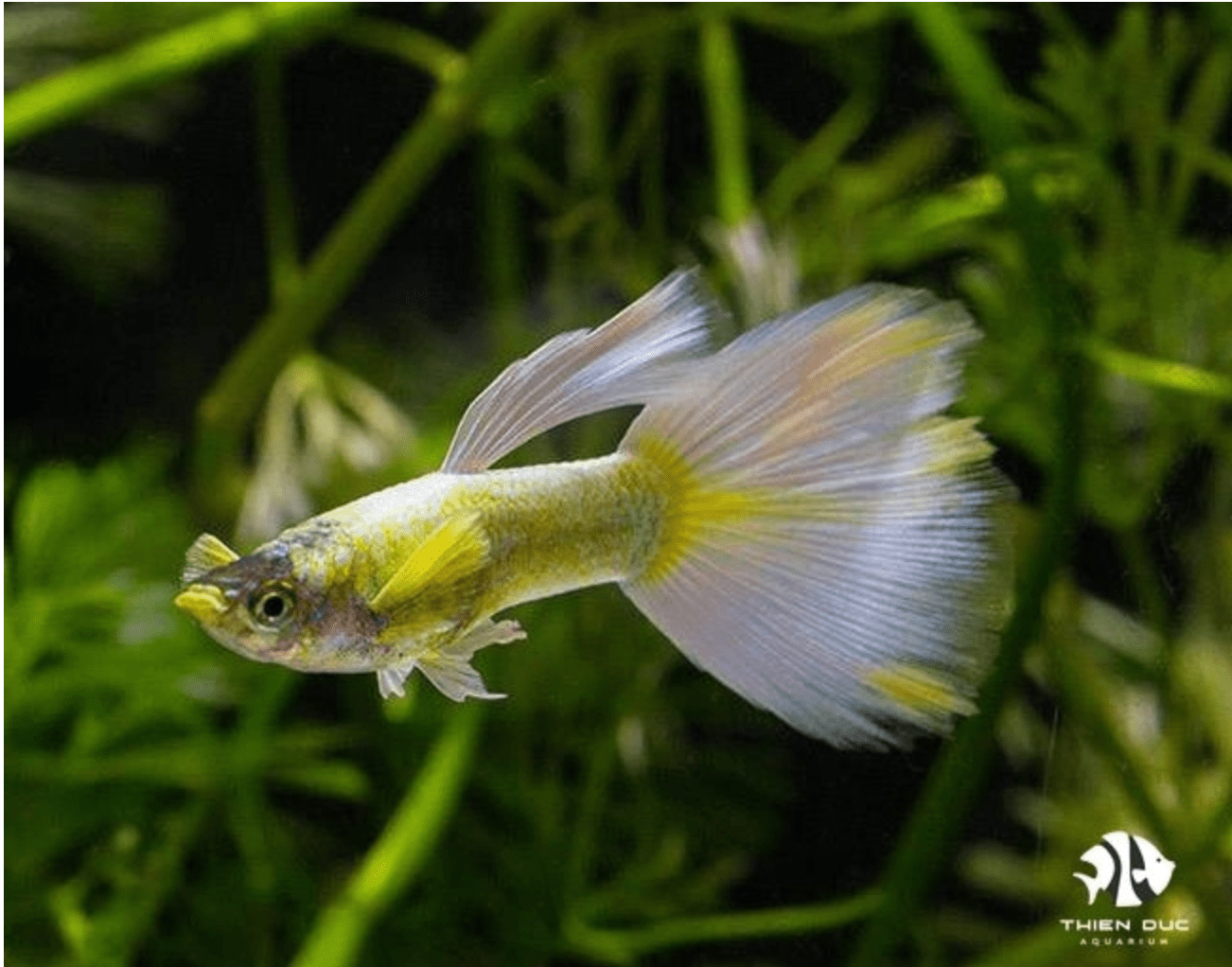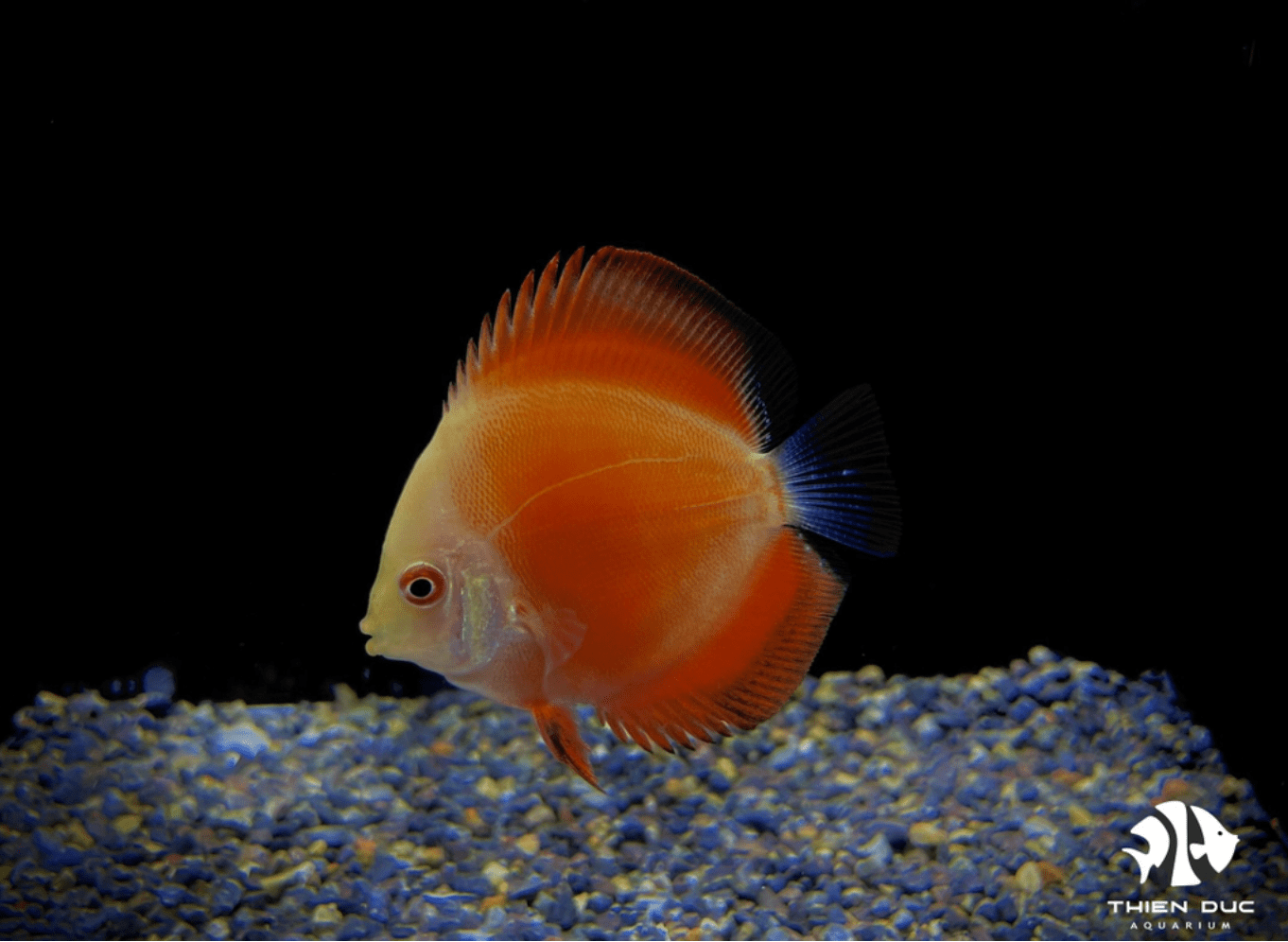Driftwood for Aquascape: Choosing the Perfect Piece
The art of aquascaping fuses design with nature, creating stunning underwater landscapes. While plants and substrate form the base, driftwood is the soul of a natural tank, offering both beauty and biological benefits. Choosing the right piece of driftwood for aquascape is a critical step that impacts the tank's aesthetic and health. This guide from THIENDUC AQUARIUM will help you select and prepare the perfect piece for your aquatic world.
Why Driftwood is Essential in Aquascaping
Before diving into the selection process, it’s important to understand why driftwood plays such a vital role in both the look and the function of an aquascape.
Aesthetic Appeal
Driftwood is more than just a decorative item; it is an organic sculptural element that adds depth, texture, and visual interest to an aquascape. A well-placed piece of wood can mimic the gnarled roots of a submerged tree or the intricate branches of a fallen log, immediately creating a sense of realism. It provides a natural focal point and a dynamic counterpoint to the soft textures of aquatic plants. The unique, often twisted forms of driftwood can be used to tell a story or to evoke a specific natural habitat, from a calm, blackwater river to a bustling jungle stream. The interplay of light and shadow on its surface adds another dimension to the tank, making the entire composition feel alive and ever-changing. The proper use of driftwood for aquascape can elevate a simple setup into a living work of art.

Biological Benefits
Beyond its aesthetic contribution, driftwood offers significant biological advantages to an aquarium ecosystem. The wood's porous surface makes it the perfect place for good bacteria to colonize. These microorganisms play a crucial role in the nitrogen cycle, breaking down harmful ammonia and nitrite into less toxic nitrate, which is then absorbed by your aquatic plants. Furthermore, as the wood slowly decomposes, it releases tannins into the water. While this may stain the water a tea-like brown—an effect often called "blackwater"—these tannins are highly beneficial. They can naturally lower the water's pH and provide antibacterial and antifungal properties, mimicking the conditions of many tropical river habitats and promoting the health of your fish. For discerning EU customers, particularly those who appreciate the natural beauty of wild-caught fish, the authentic biotope created by driftwood for aquascape is the perfect environment.
Types of Driftwood for Water Features
Once you understand its importance, the next step is learning about the different types of driftwood available and how each can influence your aquascape.
Common and Popular Types
The market offers a wide variety of driftwood types, each with its own unique characteristics. Making the best decision requires an understanding of these distinctions.
-
Malaysian Driftwood: This is a top choice for beginners due to its high density. It sinks quickly and provides a beautiful, dark brown color that contrasts well with green plants. It releases a moderate amount of tannins, which can be managed with proper preparation.
-
Manzanita: Renowned for its beautiful, intricate branching structure, Manzanita is a lightweight wood that adds a sense of flow and movement. Its light color and smooth texture make it a versatile option, though it requires extensive soaking before it will sink.
-
Mopani: A heavy, African hardwood with a distinctive two-toned appearance. It is extremely dense and sinks almost immediately, making it a reliable choice for any aquascape. Tannins are often released in large quantities from mopani wood.
-
Spiderwood: Characterized by its thin, spidery branches, this wood is excellent for creating a natural, root-like system. It is light and porous, often floating until fully saturated, and releases minimal tannins. This particular driftwood for aquascape is a favourite for those aiming for a complex, detailed scape.
Lesser-Known but Effective Types
While the above types are staples, other woods can provide unique textures and forms.
-
Cholla Wood: The hollow, cylindrical structure of Cholla wood makes it a perfect hiding spot for small fish, shrimp, and fry. It is light, porous, and releases very few tannins.
-
Savannah Wood: This wood offers a rustic, weathered look with a highly twisted and gnarled appearance, perfect for creating a rugged, high-impact aesthetic. It is a beautiful and effective driftwood for aquascape that is gaining popularity.
The Selection Process: Important Things to Think About
Choosing driftwood isn’t just about picking the first piece you see—it requires careful consideration of several key factors to achieve the best results.
Size and Shape
Choosing the right size and shape is arguably the most important decision. A good rule of thumb is the "Rule of Thirds," which suggests placing your focal point off-center to create a more dynamic composition. The size of the driftwood piece you use for aquascape should match the size of your tank; a piece too big will take up too much room, and one too small will be obscured. Look for pieces with natural curves, interesting twists, and compelling lines that suggest motion. Avoid overly symmetrical or straight pieces, as they can look unnatural and static. This consideration is particularly important for hobbyists in Germany and the UK, where aquascaping is a highly developed art form.
 Texture and Color
Texture and Color
The texture of the wood contributes significantly to the overall feel of the aquascape. A smooth piece might suggest a weathered, ancient log, while a gnarled and rough piece can evoke the feeling of a vibrant, wild habitat. Color is equally important; a dark Malaysian piece will create a striking contrast with lush green plants, while a lighter Manzanita piece will blend seamlessly into a bright, natural setting. This choice can be used to complement the species you intend to keep. For example, the beautiful wild fish from Vietnam, Laos, and Cambodia that THIENDUC AQUARIUM specializes in would thrive and look spectacular against a blackwater backdrop created by a carefully selected driftwood for aquascape.
Sinking Ability
The density and sinking ability of the wood are practical considerations that can save you a lot of time and effort. Dense woods like Malaysian and Mopani are ideal because they sink quickly and reliably. Lighter, more buoyant woods like Manzanita and Spiderwood will float unless properly weighted or soaked for an extended period. Patience is key in this process. You must ensure the chosen driftwood for aquascape is fully saturated before placing it in the main tank to avoid any risk of it floating to the surface later.
Driftwood Preparation for the Aquarium
Even the most beautiful piece of driftwood requires proper preparation to ensure it is safe and functional for your aquatic inhabitants.
Cleaning
Proper preparation is non-negotiable to ensure the wood is safe for your aquatic inhabitants. Begin by thoroughly rinsing the wood under running water to remove any loose dirt, dust, or debris. Use a stiff brush to scrub the surface and get into all the nooks and crannies. This step is crucial for any driftwood for aquascape to remove potential contaminants.
Soaking/Boiling
Soaking or boiling the wood is the most effective way to prepare it. Boiling is faster and more aggressive, helping to kill any lingering bacteria and forcing the wood to sink more quickly. It also accelerates the release of tannins, which is great if you want a clear tank. For larger pieces that won't fit in a pot, soaking is the only option. Submerge the wood in a large container or bucket, changing the water every couple of days. This process can take anywhere from a few days to several weeks, depending on the type of driftwood for aquascape and its initial density.
Curing
The final step is curing, which ensures the wood is completely waterlogged and stable. Continue soaking until it stays at the bottom of the container without any assistance. The water should also be relatively clear, indicating that most of the tannins have leached out. Once the wood is fully cured, it is ready to be a safe and beautiful addition to your tank. For customers in France and the Netherlands, who appreciate a streamlined setup, this patient preparation is a vital step.
Techniques for Placement and Aquascaping
Once prepared, the final challenge is arranging your driftwood in a way that complements plants, rocks, and fish, creating a natural underwater masterpiece.
Creating a Focal Point
When placing your driftwood for aquascape, consider it a work of art. The most compelling piece should be the main focal point, capturing the viewer's attention. Use a single, powerful piece or several smaller ones arranged to form a cohesive, flowing landscape. Think about how the wood will interact with your hardscape rocks and plants to create a sense of balance.

Layering and Stacking
Layering adds depth and a sense of scale to your aquascape. Place larger, more dominant pieces in the background and smaller, more detailed pieces in the foreground. Stacking pieces can create natural caves or intricate arches, providing excellent shelter for your fish. This thoughtful arrangement transforms a simple display into a complex underwater world. A skilled aquascaper knows that a well-designed driftwood for aquascape layout is the key to a professional-looking tank.
Attaching Plants
One of the most rewarding techniques is to attach plants directly to the driftwood. Using fishing line or super glue gel, you can secure mosses like Java Moss or epiphytes such as Anubias and Bucephalandra. Over time, these plants will grow and attach themselves, seamlessly blending the wood into a living part of the aquascape. This synergy between plants and wood is the essence of a naturalistic tank.
Conclusion
In conclusion, the right driftwood for aquascape is the heart of a spectacular tank. This crucial choice, from selection to preparation, provides both beauty and essential biological benefits. As a proud supplier of high-quality wild-caught fish, THIENDUC AQUARIUM understands our EU customers' desire for authentic, natural habitats. Our products are the perfect complement to your aquascape, ensuring a magnificent home for these creatures.
Contact Information:
-
Address: 57 Le Thi Sieng, Tan Thong Hoi, Cu Chi, Ho Chi Minh City, Viet Nam
-
Mobile: +84903912501
-
Office: +84982577871
-
Email: thien@thienducaquarium.com







 Texture and Color
Texture and Color


